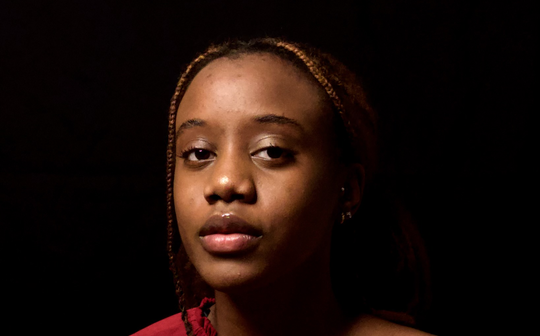In the wake of Uganda’s president ratifying one of the grimmest anti-LGBTQ bills in the world, the American embassy in Kampala chose to hoist the pride flag during pride month.
There was public outcry, Twitter was up in arms and a tiff ensued in my mother’s household. Completely typical of the African Christian household, sentiments like, “We don’t want that agenda pushed down our throats,” were thrown around.
Somewhere in the bickering, before I realized how hopeless engaging in the conversation was, gender identity and pronouns cropped up.
And I will forever be perplexed by this.
For context, indigenous Bantu languages are principally gender neutral. Despite his complete fluency in English, I couldn’t tell you the number of times my father has used “he” and “she” interchangeably.
This is not to say that these societies are void of sexism and even gender bias, but more so that their constructions of gender can be more complex than the violently imposed western binary.
So, I’ve often wondered why indigenous people adhere to such stringent ideals when it comes to people wanting to be addressed outside the binary.
The unscrupulous brutality of colonialism is largely to blame, I know this. And it’s ongoing.
I wonder, if the neo-colonial efforts to poison the strides toward inclusivity weren’t so fruitful, where would we be?
Why harp on grammaticality to begin with?
Language is a living, breathing thing, constantly undergoing shifts. Primarily, it’s a function of community. If it’s not interpersonal, what’s its use? By and large, language is meant to bridge gaps, not create them.
Language is socially constructed just as gender is. While grammar provides structures that enable us to understand each other with ease, it evolves.
Grammatical gender is something interesting in the English language because gendered nouns and articles have mostly evolved out of use.
Yes, we maintain grammatical gender binarism in nouns like waiter and waitress, widow and widower, and countless other examples. But the English language discarded gendered nouns sometime in the Middle Ages.
Some of the irritation in learning other languages lies in those pesky definite and indefinite articles that characterize gendered nouns.
In German, ‘the’ takes the masculine form ‘der’, the feminine form ‘die’, and the neutral form ‘das’. In Spanish, ‘the’ takes the masculine forms ‘el’ and ‘los’, and the feminine forms ‘la’ and ‘las’.
I remember studying for my AP French tests, grueling over which article belonged to which noun – there were so many of them for my wee teenage brain to memorize.
I wondered then as I wonder now about the sociological implication of imbuing nouns with either a masculine or feminine essence. What does that do to a society’s implicit and explicit understanding of gender identity and expression? What function does it serve in this ever-evolving landscape?
What about languages with no grammatical gender in neither noun, nor pronouns? Genderless languages like Tagalog in the Philippines? A common example lies in Indigenous American languages and societies with the development of the term ‘Two-Spirit’. The umbrella term serves as a unifying agent for language that was already expansive within Indigenous groups.
It’s my understanding that these Romance languages have developed gender neutral language to make space for diverse identities just as other languages continue to do. For example, Spanish speakers have widely adopted the term ‘Latine’ as a gender neutral and inclusive alternative to the masculine and feminine identifiers.
Maintaining that functionality informs the English words used to describe them, social gender should inform grammatical gender. Gender marking evolves. It’s a natural process, and we are quick and capable learners.
It becomes a question of whether we have the curiosity, empathy, and compassion to learn and make space for difference. What does it hurt to be expansively inclusive?






Comment policy
Comments posted to The Brown and White website are reviewed by a moderator before being approved. Incendiary speech or harassing language, including comments targeted at individuals, may be deemed unacceptable and not published. Spam and other soliciting will also be declined.
The Brown and White also reserves the right to not publish entirely anonymous comments.
1 Comment
“Language is a living, breathing thing, constantly undergoing shifts. Primarily, it’s a function of community. If it’s not interpersonal, what’s its use? By and large, language is meant to bridge gaps, not create them. “
I would say the primary function is to effectively convey information. Language is neutral but the use of it is not.
Language is living and breathing; some current developments indicate language is sick. Individuals of the left and right use language more like a stick to project power than as a bridge to create understanding.
“ violently imposed western binary”, a creative use of language to convict themale and female idea of evil while assigning the evil to western civilization; this is not a bridge.
“It becomes a question of whether we have the curiosity, empathy, and compassion to learn and make space for difference. What does it hurt to be expansively inclusive?” This is seductive it sounds so right and fair. Everyone deserves our respect and support; that does not include acquiescence to each and every desire.